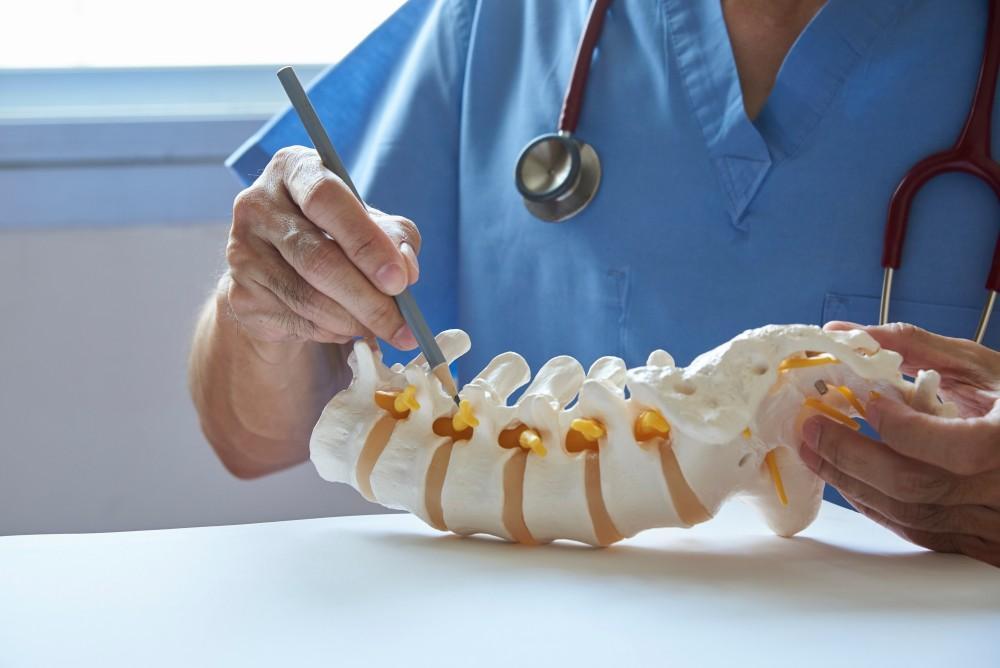
How Neuromodulation Relieves Diabetic Peripheral Neuropathy

Diabetes is a disease characterized by high glucose (sugar) levels in the blood. It occurs either when the pancreas’ beta cells fail to make the hormone insulin, responsible for moving sugar into cells to be converted to energy (type 1), or when the cells themselves become resistant to insulin’s effects (type 2).
High blood sugar levels can wreak havoc on your health, from elevated risks of cardiovascular disease and stroke to the destruction of nerve tissue providing sensory information to the brain (peripheral neuropathy). It can also lead to a great deal of pain, compounding the other, harmful effects and decreasing your quality of life.
At Vertrae®, board-certified neurosurgeon and neurological spine surgeon Dr. Kamal R. Woods sees many patients with diabetic peripheral neuropathy, and he’s found that neuromodulation with a spinal cord stimulator can be just the thing to interrupt pain signals and restore quality of life. Here’s how it works.
What is diabetic neuropathy?
Diabetic neuropathy is the destruction of nerve function in the peripheral nervous system (outside the brain and spinal cord). It can affect just a single peripheral nerve, called diabetic mononeuropathy, or many peripheral nerves, called diabetic polyneuropathy (DPN). DPN affects both sensory and motor nerves that branch out from the spinal cord and head into the arms, hands, legs, and feet. For some reason, it’s the longest nerves — those that reach from the spine to the feet — that are affected most.
DPN can lead to:
- Tingling, burning, or prickling sensations
- Pain and numbness in the hands, legs, and feet
- Muscle weakness in the feet and hands
- Sharp pains or cramps
- Heightened sensitivity to touch
- Insensitivity to pain or temperature changes
- Loss of balance or coordination, especially on uneven surfaces
Because it prevents the ability to sense cuts, bruises, or other injuries, DPN can put a diabetic at risk for leg, foot, and toe injuries, as well as the development of slow-healing ulcers and chronic infections.
What is neuromodulation?
Merriam-Webster defines a neuromodulator as “something that potentiates or inhibits the transmission of a nerve impulse but is not the actual means of transmission itself.” What this means is it’s a device or process that changes the way a nerve signals or the way the brain interprets incoming signals such as pain.
In the case of the spine, the neuromodulator of choice is the spinal cord stimulator (SCS). The stimulator contains thin wires (the electrodes) and a small, pacemaker-like battery pack (the generator), which is implanted under the skin of the abdomen or buttock. The electrodes are placed between the spinal cord and the vertebrae in what’s known as the epidural space, targeting the specific nerve or group of nerves responsible for the pain signals.
Patients use an outside-the-body remote control when they feel pain to send electrical impulses through the electrodes to dampen the pain signal.
SCS is used most often after conservative treatment options have failed to provide sufficient pain relief, and it can be used to treat or manage many different types of chronic pain, including that from DPN.
At Vertrae®, we use the Nevro HFX™ device, an FDA-approved SCS that’s been clinically proven to treat the shooting, burning, and pins-and-needles pain associated with DPN in 80% of the people who use it.
The electrical pulses sent from the generator to the electrodes calm the targeted nerves, reducing pain signals to the brain. The HFX device has also been clinically proven to provide significantly better and longer-lasting pain relief from chronic back and leg pain than other SCS devices, and it’s covered by almost all major insurance plans, so you don’t have to worry about cost.
If you’re dealing with the disruptive pain of diabetic peripheral neuropathy and conventional treatments aren’t helping, it’s time to come into Vertrae® for a consultation with Dr. Woods to see if spinal cord stimulation is right for you. To schedule, call us at either location, or book online with us today.
You Might Also Enjoy...


4 Benefits of Outpatient Spine Surgery

Am I a Candidate for Kyphoplasty?

Pulled Muscle vs. Pinched Nerve: What's the Difference?

4 Subtle Signs of Sciatica

